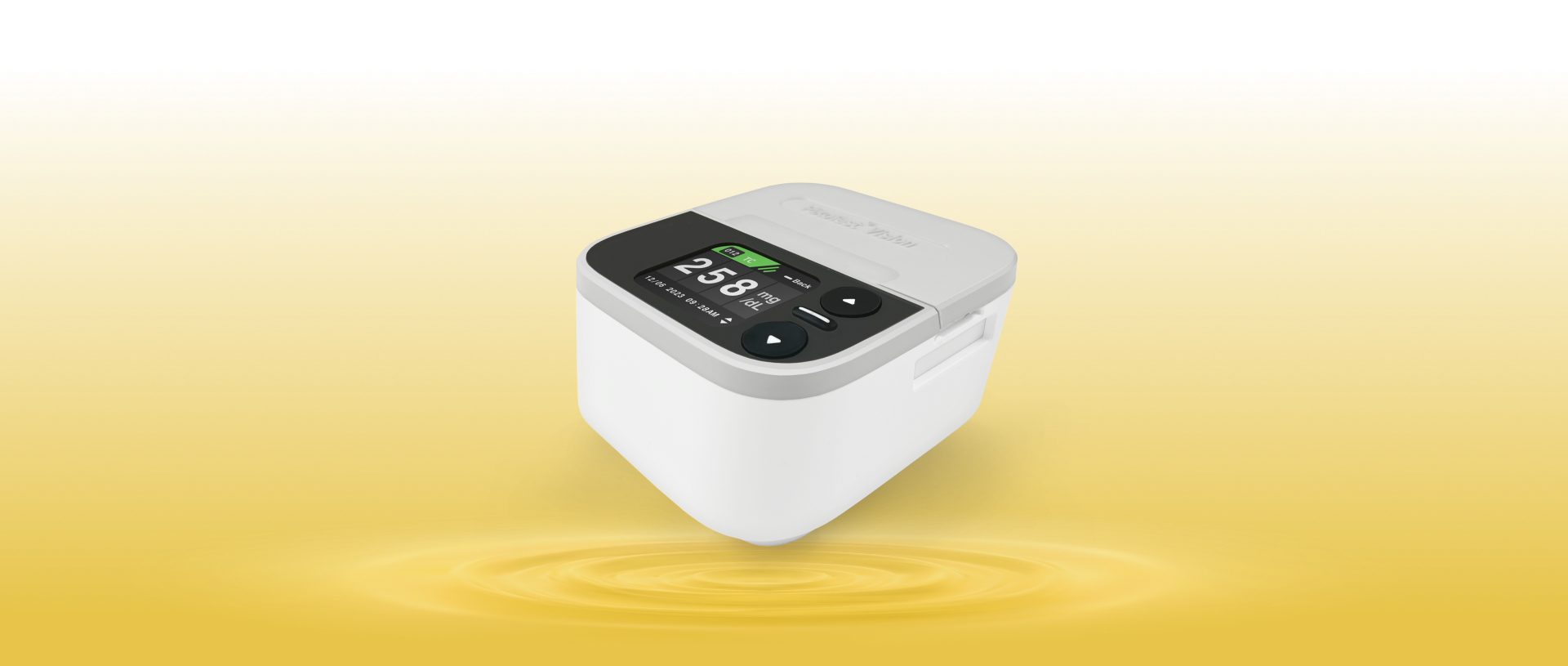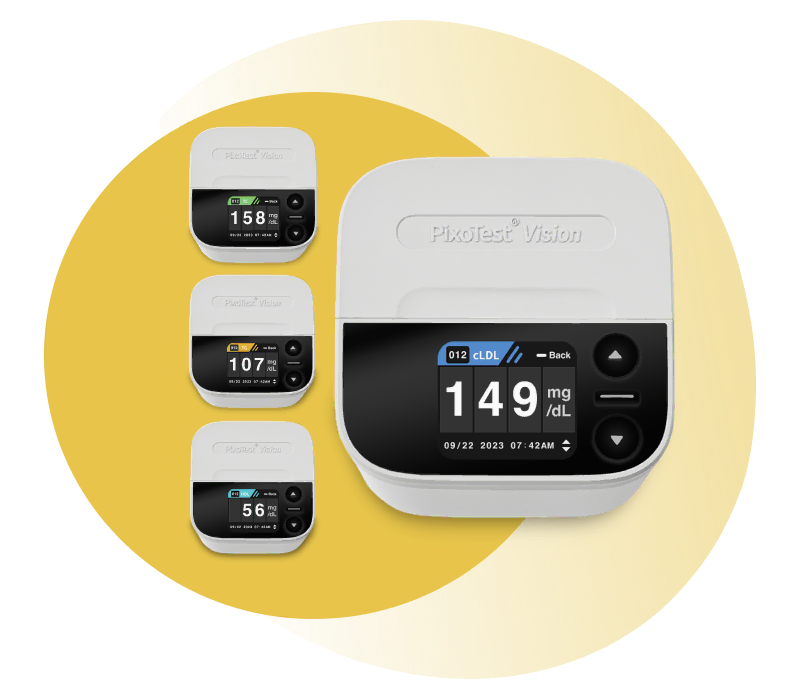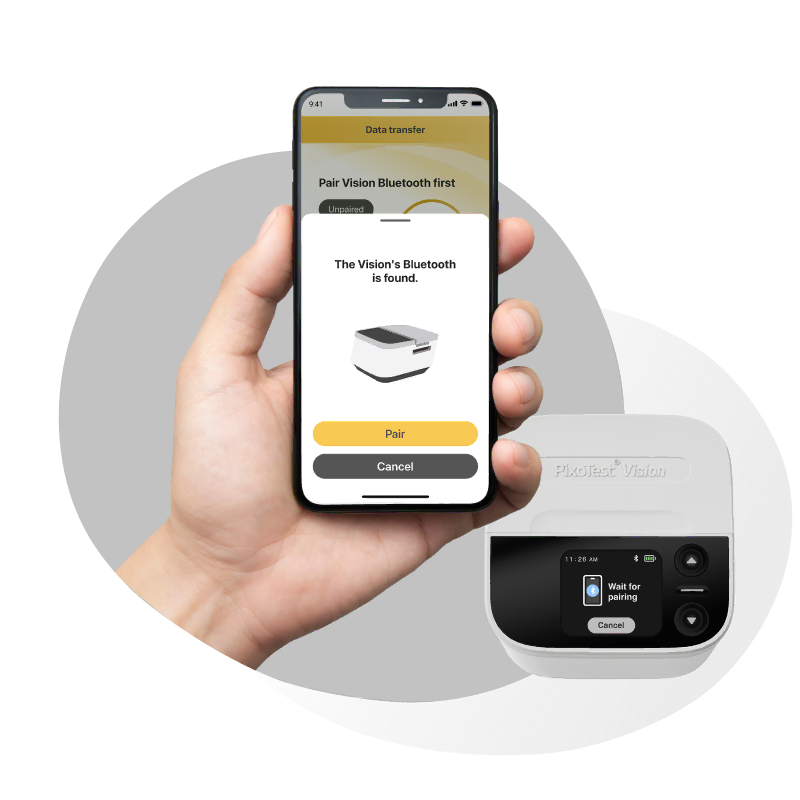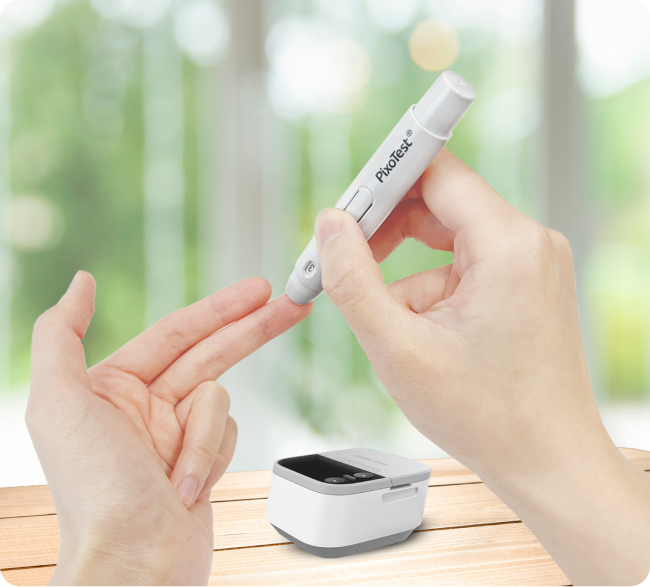1. Complete blood lipid analysis - one operation to obtain total cholesterol, triglyceride, high density lipoprotein cholesterol and low density lipoprotein cholesterol (calculated) values.
2. Fast and convenient - easy to complete the testing at home, three minutes to get the testing results.
3. Data Tracking - The PixoTest Vision Analyzer connects to PixoHealth Vision App and synchronizes the testing results from the analyzer to the App. App will automatically generate graphs, making it easy to understand the changes of testing results and track past health information.
4. Ease of carrying - The PixoTest Vision analyzer is small and lightweight, with only one palm in size.
Typically, individuals with mild hyperlipidemia may not experience obvious symptoms. However, they might encounter symptoms such as dizziness, fatigue, insomnia, forgetfulness, chest tightness, or palpitations. These symptoms, resembling those of various other conditions, are often overlooked by patients.
In more severe cases of hyperlipidemia, symptoms like headaches, chest tightness, chest pain, shortness of breath, weakness, or facial drooping may manifest.
Failure to timely seek medical treatment may lead to complications such as coronary heart disease or stroke. Therefore, we recommend undergoing lipid testing when these symptoms occur frequently.
Through quick and straightforward blood tests, individuals can gain insights into their actual physiological conditions.
When cholesterol and triglycerides levels are high in the blood vessels, they can deposit and form plaques in the arteries, leading to thickening of the endothelium and gradually reducing the elasticity of blood vessels, making them narrower. When blood vessels vary in thickness, causing fluctuations in blood flow, it can lead to situations prone to clotting or detachment, resulting in coronary artery disease due to blood blockages.
Total cholesterol (TC):
ATPIII recommends that the normal level should be below 200 mg/dL. Most people associate cholesterol with cardiovascular diseases, but in fact, lipoproteins are the main cause of disease.
High-Density Lipoprotein Cholesterol (HDL):
Commonly known as good cholesterol, is essential for maintaining blood vessels. It helps to remove excess cholesterol from the blood vessel walls. For men, it is generally controlled at 40 mg/dL or above, while for women, it is above 50 mg/dL. The higher the concentration of HDL cholesterol, the greater the chance of having clear blood vessels to maintain blood flow. In addition, HDL also has antioxidant and anti-inflammatory effects to reduce the likelihood of blood vessel injury.
Low-Density Lipoprotein Cholesterol (LDL):
commonly known as bad cholesterol, which can promote atherosclerosis. Generally, LDL cholesterol should be controlled below 130 mg/dL. When the level of LDL cholesterol in the body exceeds that of HDL cholesterol, cholesterol in the blood will exceed the amount needed by cells. At this point, excess cholesterol will accumulate on the blood vessel walls, thereby increasing the risk of cardiovascular diseases. LDL cholesterol is an important pathogenic factor for cardiovascular diseases and is also an indicator for treatment.
Triglycerides (TG):
It should be controlled below 150 mg/dL to be considered normal.
PixoTest Vision Analyzer can be used independently. But using it in conjunction with the PixoHealth Vision App, it can automatically generate charts of your lipid testing results, which makes it easy to observe the changes in your testing results and track your past health information.
Additionally, the App also offers "Your AI Health Coach" -- an AI Q&A function to help you understand the meaning of your lipid testing results and related issues.


















